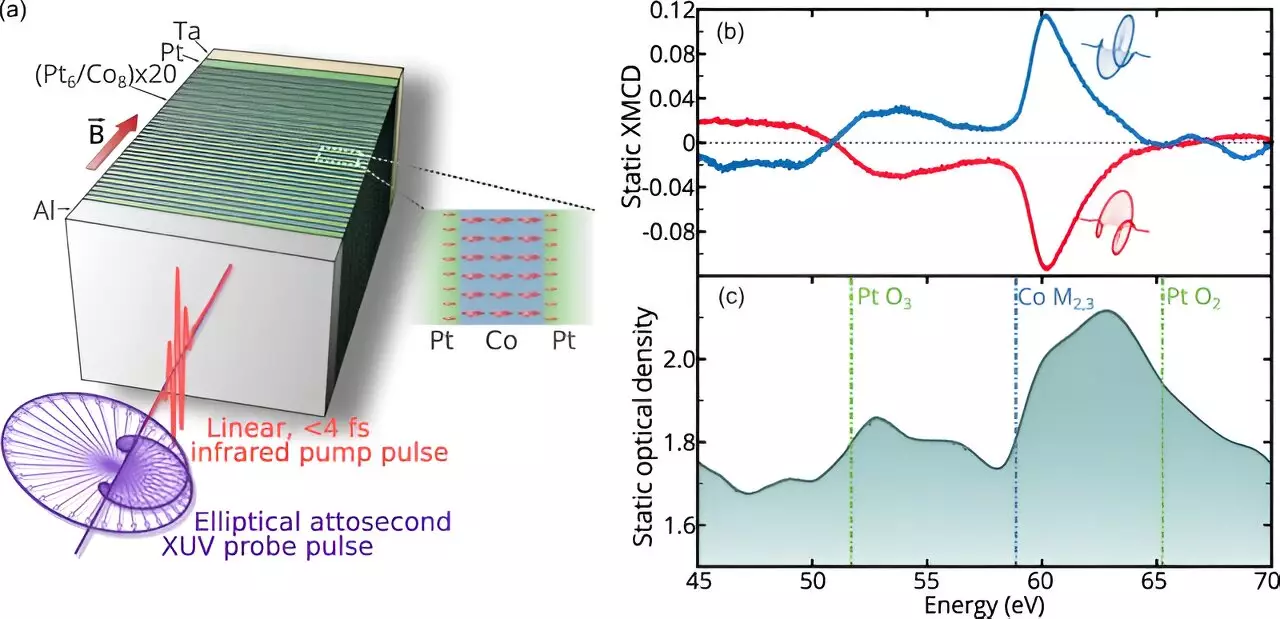In the realm of modern electronic devices, efficiency and speed are paramount. A vital aspect of this technological evolution lies in targeted energy use, specifically through the manipulation of spin currents. Recent advances reveal that spin currents can be generated directly using ultrafast laser pulses, a significant breakthrough presented by an international team of physicists in their study published in *Physical Review Letters*. This pivotal research not only opens doors for more efficient electronic systems but also promises potential enhancements in energy consumption and overall device performance.
Traditionally, the generation of spin currents has involved indirect methods, where lasers excite electrons, leading to randomly oriented spin configurations. This resulted in complicated filtering processes to extract electrons with aligned spins, significantly lowering the efficiency of such systems. However, the recent study shifts this paradigm by demonstrating that spin currents can be generated directly from electrons oriented in the same direction. The experimental setup comprised a target block constructed from alternating layers of platinum and cobalt, each only a nanometer thick. When a strong magnetic field was applied perpendicularly to the layers, it effectively aligned the spins within both materials.
By firing a linear polarized laser pulse and a circularly polarized probe laser at this nanostructure, the researchers were able to manipulate the electron spins with remarkable precision. The immediate consequence of this interaction was the alteration of magnetic ordering within the layered material, occurring within femtoseconds—far quicker than previous methods. This rapid response accentuates the effectiveness of the laser-based approach to spin current generation.
The practical ramifications of this discovery could be transformative. As electronic components demand increased speed and efficiency, the ability to leverage spin currents for information processing signifies a potential leap forward in technology. The implications stretch across various sectors, from consumer electronics to the burgeoning realm of quantum computing, where the nuanced control of electron spins could facilitate faster data transmission and improved quantum states.
What stands out in the researchers’ findings is the incorporation of theoretical calculations that align closely with experimental observations. This synergy between theoretical and practical aspects not only bolsters confidence in the efficacy of the new technique but also offers a stronger foundation for the potential integration of spin-based technologies into real-world applications.
While this innovation is promising, the path forward is not devoid of challenges. Future research must focus on scaling the technology and exploring its integration with existing electronic systems. Additionally, there is a need for extensive studies on the longevity and stability of the spin currents generated. Addressing these challenges is pivotal in paving the way for a future where energy-efficient, high-speed electronic devices are commonplace.
The direct generation of spin currents using ultrafast laser techniques symbolizes a significant breakthrough in material science and electronics. By addressing previous inefficiencies and demonstrating rapid electron spin manipulation, this research lays the groundwork for advanced electronic systems that could redefine speed and efficiency standards. As the field progresses, continued innovation in this domain will be crucial for harnessing the full potential of spintronics in modern technology.

